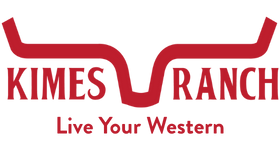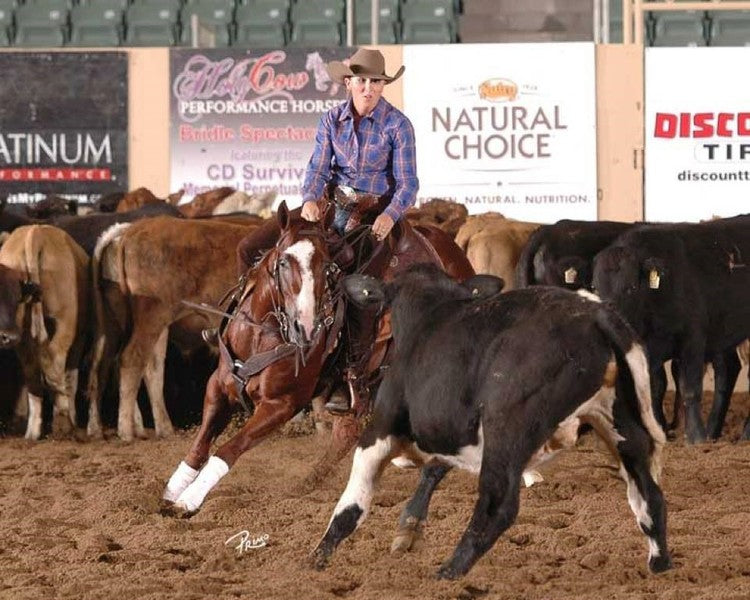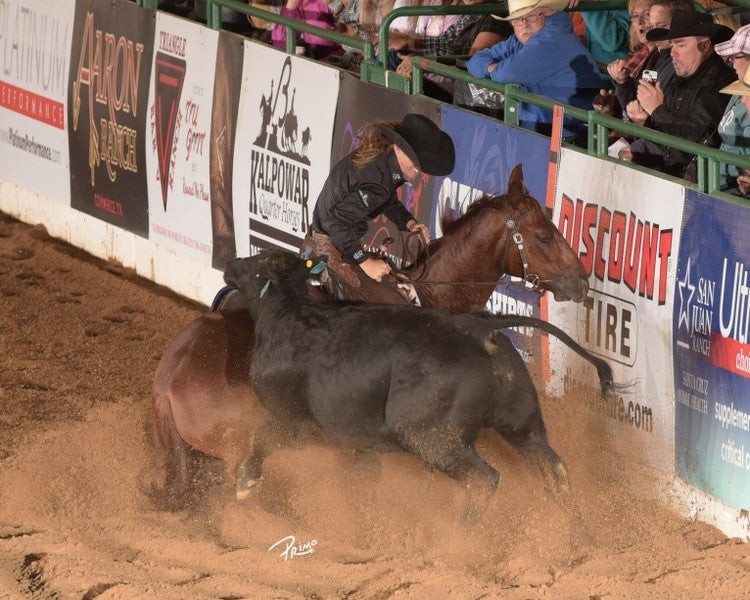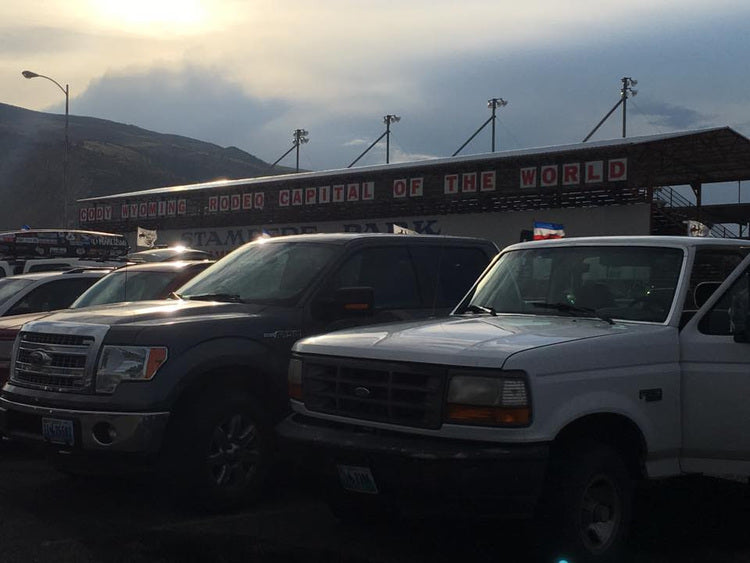Here comes the Cow Horses! The 2016 NRCHA Snaffle Bit Futurity is right around the corner. Kimes Ranch Cow Horse Professionals Chris Dawson, Erin Taormino, and Shadd Parkinson sit down to answer all of your burning questions.
Chris Dawson was the 2014 Snaffle Bit Futurity Reserve Open Champion aboard Shiney Nu Annie. Dawson’s career exploded in 2013 when he won four major NRCHA shows on the stud Travelin Jonez. Today, Dawson is the number 2 open rider in the NRCHA. He rides the Watsons and the Chuck jeans.
Erin Taormino was the 2015 Snaffle Bit Futurity Reserve Open Champion. She was piloted to victory by Plain Wright. Since her breakout year in 2014, Taormino skyrocketed to the number 10 open rider position in the NRCHA. She rides in the Francesca and the new Alex model jean.
Shadd Parkinson won the 2014 Snaffle Bit Futurity Open Bridle class aboard the dynamite horse “Spursuasion” Since he began his professional training business in 2001; he has won multiple AQHA world championships and reserve championships along with many NRCHA wins. He rides in the Watsons and the new Dillon model jean.
- Do you have any training philosophies that you apply to all of your horses?
CD: Yes, I do. Keep it very simple. Horses, I think, are smart. But, you can only communicate with them in so many ways. So, you have to make sure that whatever you’re doing makes sense to them. I treat it a lot like dealing with people. They say no matter who says what, don’t believe it if it don’t make sense. Another one is never lie to someone that trusts you and never trust someone who lies to you. I try to apply that to all of my horses. If I tell them something, I try to stay trustworthy to my horses. A big thing we say at clinics is steer, stop, and rate. Really, that’s the only three things that they have to do. There’s a lot to it if you make it that way, or it can be as simple as steer, stop, and rate. If they steer, stop, and they rate a cow, the rest of your life is pretty simple.
ET: Not really. I try to train each horse as an individual. Sometimes you do fall into the trap, well if it worked on this one, it’s got to work on this one too, but it doesn’t. I just try to train each horse as an individual. I’m always trying to learn, better myself, and always progress. Even if I think I have one thing maybe figured out, I’m always looking to make it better. Horses will humble you so much.
- What is the hardest part about being a horse trainer?
CD: The different things you have to do. Riding horses is easy. Running the business is hard. Luckily, I have my wife that does a lot of that. Dealing with customers is another. You have different personalities. You have all of those different personalities in your horses that you deal with all day and then you make phone calls and deal with all of those different personalities.
ET: The roller coaster of emotions and just dealing with another animal. You’re dealing with another mind, another brain, and trying to figure out how each one works and functions and train it to the best of its ability. I feel like, for me, the hardest thing is doing each horse justice.
SP: It’s dealing with the people. It’s not hard when you keep it in perspective; it’s these people’s hobbies. As long as you can make it fun and have a little bit of success, it’s pretty easy.
- What advice would you give to somebody that aspires to have a career like yours?
CD: I’ll give them the same advice a guy gave me—work your tail off, keep your head down, and pray for some luck. John Slack told me that.
ET: I feel like, for me, it’s about keeping your head down, doing your job, and working really hard to gain the respect of every one. I don’t feel like the cow horse guys treat me any different than they treat any other guy, but if you’re a girl in this business it can be more difficult, because it is somewhat of a man’s world. It is. There are more men than women. I would say keep your head down, work hard, and try not to take things personally.
SP: It’s really hard to get into because the only way you can get better at it is by showing. It doesn’t matter how much talent you have in the world, you have to go show and get the experience. I grew up showing so I knew how to show them, I just had to learn how to train them. Well, a lot of these kids don’t know how to show, so they have to learn how to train them and show them. It’s a tough deal.
- How does somebody become successful in the Cow Horse Sport?
CD: I was told to go work for a lot of different people, but what worked best for me is I went and worked at (Todd Crawford’s) place for a long time—four years—and learned what he did. Probably the best thing I learned from him is he is constantly adapting and trying to stay current. There’s not any margin for error. Now, there are so many resources for trainers. The Todd Crawford’s and Ron Ralls that didn’t work for anybody just beat their heads against the wall and figured it out. It took them twenty years to figure stuff out and they share all of that with us, so it cuts down the learning curve. Now, me and my generation, we’re sharing with our assistants and so that learning curve is going to shrink even more.
SP: That’s where luck comes in. I was lucky enough, my dad had some brood mares so starting out I always had some good ones to show.
- What is the best part about being a horse trainer?
CD: It’s the people. The people are awesome. I grew up as an only child, so these guys are like my brothers. They say work until your idols become your rivals and that’s true. I grew up watching (Todd) Bergen and (Todd) Crawford—those guys are awesome right? It’s cool just to come out here and play with them.
ET: Honestly, I feel like it keeps you very much grounded and humble. That is probably the best thing about it. And I love the fence work, even though it can be heart breaking. And I love the comradery between everybody. I’m not taking away from any other discipline because any other discipline can be very humbling, but the cow work is so humbling because it’s three events. So the comradery and everybody knows what it takes to put three good runs together.
SP: It’s the horses. I don’t really look at it as I’m riding horses for people. Each one, I feel, is mine. So, you have a whole bunch of them you get to ride and you get to know, and that’s the best part.

Figure 1- Erin Taormino (photo credit Primo Morales)

Figure 2- Chris Dawson (photo credit Primo Morales)
 Figure 3: Shadd Parkinson (photo credit McKenzie Parkinson)
Figure 3: Shadd Parkinson (photo credit McKenzie Parkinson)
Lainey



